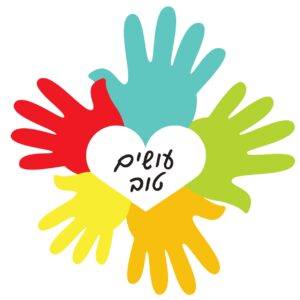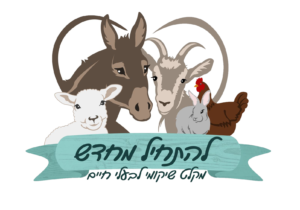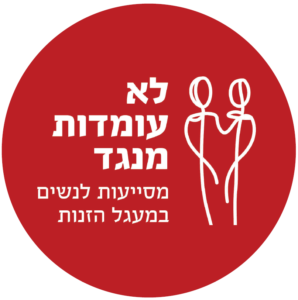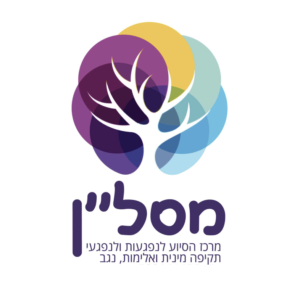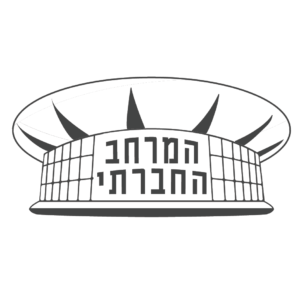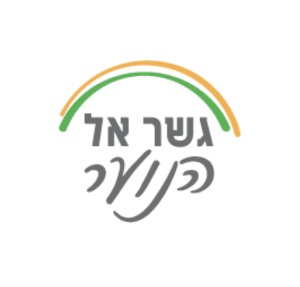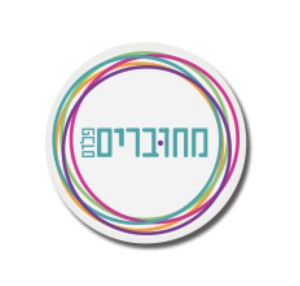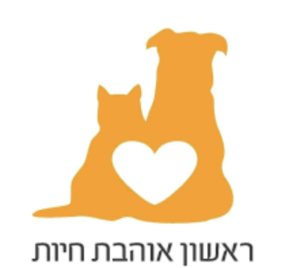Product Marketing 101
Aimed to supply you with the tools to design and manage a successful marketing strategy for you digital product
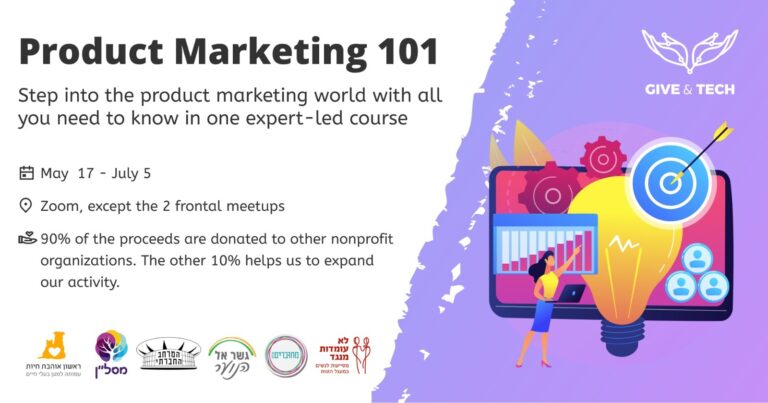
About the course
Product Marketing 101 course, designed to equip you with the skills and knowledge to succeed in today’s competitive business landscape. In this course, we will cover a range of topics to help you become an expert in product marketing and drive growth for your organization.
What will you learn?
In the Product Marketing 101 course, you will learn and practice the fundamentals of product marketing, which involves identifying, developing, and promoting a product to a target market. You will learn how to conduct market research to understand customer needs and preferences, how to position and differentiate your product from competitors, how to develop a go-to-market strategy, and how to measure the success of your marketing efforts.
The course will include practical work and real examples from the lecturers’ work at Israel’s leading companies.
By the end of the course, you will have the knowledge and skills needed in the product marketing sphere, that can be applied in a variety of industries and contexts, and be used to get a job in a product marketer role and excel at it.
Who is it for?
B2B marketers with more than 2 years of experience looking to become product marketing managers.
Payment & donation
You choose how much you wish to donate.
Private tickets start at 1100₪.
Business tickets start at 1900₪.
You can see the various non-profit organizations we donate to in the ‘Who we donate to’ section of this page.
90% of your donation will be used to help these charities exist and support those in need, and 10% will go to Give and Tech’s operational costs (we don’t take salaries, all of us are volunteers).
Things you should know
The course begins on 17.05.23 for 7 meetings (weekly).
The meetings will be planned as much as possible to be always on Wednesdays, between 1800-2030. Changes may apply to the number of meetings and specific meetings’ length, depending on the subjects and agenda for that topic.
The first and last meetings will be face-to-face in different locations (TBD), with recordings that will be shared with the student body when possible online.
All meetings will be in the format of guests from the industry reviewing the current topics, following the syllabus as designed by our course team. No general exercise meetings or assignments are planned but might be given as part of specific topics.
Overall the course plan is to encompass 16 hours.
90% of the proceeds are donated to nonprofit organizations
The other 10% helps us expand our nonprofit activity
Got Questions? We've Got Answers
The course begins on 17.05.23 for 7 meetings (weekly).
The meetings will be planned as much as possible to be always on Wednesday, between 19:00-21:00. Changes may apply to the number of meetings and specific meetings’ length, depending on the subjects and agenda for that topic.
B2B marketers with more than 2 years of experience looking to become product marketing managers.
- Donate and secure your place
- Choose the type of ticket that’s relevant for you, business or private.
If a business purchase the ticket it is a business student.
If the receipt details are of the business – it’s a business student.
If you are an individual, purchasing the ticket for yourself and wants your private details on the receipt – this is a private student ticket. - Choose how much you wish to donate.
Private tickets start at 1100₪.
Business tickets start at 1900₪.
You will be able to choose how much you’d like to donate.
- Choose the type of ticket that’s relevant for you, business or private.
- Your donation
You can see the various non profit organizations we donate to in the ‘Who we donate to’ section of this page.
90% of your donation will be used to help these charities exist and support those in need, and 10% will go to Give and Tech’s operational costs (we don’t take salaries, all of us are volunteers).
G&T and collaborative organisations certificate of appreciation.
The association’s approach is that the donation is not a payment for the course (it is a donation and the course is a by-product), so there is no direct relationship between the number of sessions the student has had and one refund or another.
If we think the course is not for you after one or two meetings – we will return the full amount and check if it is possible to put someone else in your place.
All course lectures, practice sessions and panels will be held in Hebrew only.
The sessions will be recorded and available for you to watch offline.
If a business purchase the ticket it is a business student.
If the receipt details are of the business – it’s a business student.
If you are an individual, purchasing the ticket for yourself and wants your private details on the receipt – this is a private student ticket.
Our Lecturers

Dorit (Ofir) Turpaz
Product Marketing Leader at monday.com

Gaston Rendelstein
Director of Product Marketing at AppsFlyer

Rony Vexelman
VP Marketing at Optimove

Mayan Bar
Product Marketing at Meta

Sivan Mazuz
Product Marketing Team Lead at Wix

Asaf Shevach
Director of Product Marketing at Lusha

Dorit Oren Israeli
Director of Product Marketing at SysAid

Omer Oren
Senior Product Marketing Manager at Artlist

Guy Zelig
Senior Solution Marketing Manager at Appsflyer

Dar Bonn Eckhaus
Senior Product Marketing Manager at WalkMe

Ran Erez
Product Lead at monday.com

Shachar Rimer
Product Marketing Manager at Guardio
Course Staff

Aviv Braun
Senior Digital Marketing Manager at Adcore

Gaston Rendelstein
Director of Product Marketing at AppsFlyer

Gil Kroin
Project Manager at Mobileye

Inbal Vermus
Product Manager at Reeco
Course Syllabus
| Kickoff | -Introductions |
Product marketing OKRs | Introduction: -Definition of OKRs -Importance of setting and tracking OKRs Why use OKRs: -Aligns individual and organizational goals -Increases focus and accountability -Enables regular progress tracking and feedback How to set effective OKRs: -Start with the “why” – establish the purpose of the OKR -Make the objective specific, measurable, attainable, relevant, and time-bound (SMART) -Identify key results that will demonstrate progress toward the objective -Set stretch goals that push the team to achieve more -Consider the alignment with the company’s vision and mission How to set OKRs for PMM: -Interactive brainstorming about potential OKRS for PMM -Who did we set OKRs for PMM at AppsFlyer |
| Market research | Introduction – Why do research – avoiding the ivory tower/echo chamber syndrome – What types of research are common – market sizing, persona identification, messaging, competitive positioning – Sources of research – Internal (CSM, Sales, Product, etc) & External (Customers [covered in previous session], online, analysts, Statista, competitive [covered in a later session]) Performing Research – Main sources of research (Statista, SimilarWeb, G2, Google (w hacks for search), industry newsletters, etc) – Data ingestion 101 – building an outline of what you want to know (WYWTK), tagging insights, assumption making, and data modeling (scenario planning) – Research exercise – choose a topic (I’ll provide ideas), use the tools to perform the research Presenting Research – The importance of organizing your findings for different audiences (sales, CS, product, MGMT) – Research example for sales based on analyst reports – Research example for internal messaging sheet – Research example for funding round based on open source content – Research exercise P2 – create two slides to present your research |
| Customer Interviews | Interview for business clients: When should you run clients interviews? Mainly, when you are looking to prove or disprove an hypothesis on your product or get tactical feedback on design/features Before the interviews: – Define what hypothesis(s) you want to validate and align with your stakeholders – Prepare questions that you would like to discuss (prepare follow up questions on each topic) – Identify the clients you want to interview-which segments / use-cases/ business type / size – Identify the functions you want to interview (i.e. Marketing manager) – Identify who will join from your team- for example – for technical topics, its good to include engineers or tech leads Plan the Discussion: – Start with high level / background questions to understand client goals/needs and their business – Set the expectation to what topics will be discussed (and more importantly- what topics will not be discussed) – Make sure you let the client do most of the talking, but do bring them back if they start discussing a different topic – Leave time at the end for clients to ask questions and raise any concerns they have not related to the topic discussed After the interview: – Summarize the findings and communicate with the relevant stoke-holders – generate actionable insights such as product recommendations. – Use both the qualitative and quantitative aspect of your findings: i.e. %x clients said this and a strong quote from one client. – Don’t stick to your hypothesis, be open to disprovidng it – If possible, follow up with clients to share the impact of the discussion and what they can expect next – Don’t ignore top-of-mind concerns from clients, even if these are not related to your product/project. |
Storytelling | Why is storytelling essential for (any) product marketer? |
| Set expectations: What are you trying to achieve? | |
| Research and prepare: Know your product & audience through and through | |
| The importance of strong openings | |
| Talk to people, not to brands | |
| Heros, villains and mentors: WIIFM | |
| Let the data speak | |
| How to use elements to strengthen your story | |
| Don’t throw too many balls: the TMI trap |
Value selling | How to drive ARR growth by turning customer-facing teams into consultants |
Customer segmentation + Personas | Intro – what’s a user segment, why segement, tie-in with personas/JTBD |
| Leading segmentation methods, and how to gain insights without the help of an analyst (Demographics, Psychographics, Geographics, Behavioral, need-based segmentation) | |
| Best practices – market segmentation requirements and how to do it well | |
| Customer segmentation examples | |
| Personas – use cases, pre work, templates, communication around the org, reviewing and measuring success | |
The STP model |
PLG funnel | Intro to funnels: a brief overview of what marketing funnels, their importance and what stories do they tell |
| Metrics for measuring success: an exploration of the key metrics such as website traffic, CTRs, CVR, LTV. | |
| Mapping customer journey: a discussion of how to map it and understand touchpoints that are important for moving customers through the funnel | |
| Product led growth: an overview of the PLG model and how we can implement it on our customers journey | |
| Testing and optimization: the importance of continuous iterating and testing changes | |
| Key Takeaways |
PMM all over the place: Working with multiple interfaces | What business units does the PMM work with? |
| Which KPIs are relevant to each interface? | |
| What is PMM’s unique value within a project/squad | |
| How do you manage it and still stay sane? |
Sales enablement best practices | What is sales enablement & why it matters (in geneal and in PMM) |
| Sales Process & Growth Models’ impact on sales enablement | |
| Challenges of Sales Enablement (WHY IS IT SO HARD???) – Interactive Exercise | |
| When Sales Enablement Goes Wrong: Present Case Ask students how they would approach | |
| Key Components of Sales Enablement (Content Creation & Distribution, Trraining & Coaching, Analytics & Measurement | |
| Best Practice #1 – Unified Foundation | |
| Best Practice #2 – Be Accountable & Set KPIs | |
| Best Practice #3 – Voice of Customer | |
| Best Practice #4 – Make it Accessible | |
| Best Practice #5 – Keep it Simple Stupid |
Retention | Retention definition and importance |
| Retention metrics: Retention rate, churn rate, LTV, NPS, engagement metrics | |
| Strategies for Improving Retention: User Onboarding User Engagement Personalization Marketing Automation |
Competitive analysis | The common mistakes in competitive analysis |
| B2C tools | |
| B2B tools |
Getting the job! | What to focus on CV wise, interviews and home assignments |
| You are the product, how to tell your own story, personal branding | |
| Tips and tricks to getting your first job as a PMM | |
| Interactive exercise |
Summary | Pmm in the product lifecycle |
| What we’ve done | |
| What’s now |
GTM planning | Introduction: -Definition of GTM plans -Importance of having a well-defined GTM plan Developing Business-Driven GTM Plans: -Setting objectives: Identify and prioritize key business objectives that the GTM plan should align with -Data Analysis: Gather and analyze data to identify growth engines or bottlenecks holding you from achieving the business KPIs. -Assumption Development: Develop data-driven assumptions about what will move the needle. -Initiatives Creation: Create and prioritize initiatives to achieve the objectives and test assumptions GTM plan template review -Share template with students -Go over each section and “how to” -Show GTM plan example based on the template |
Intro to jobs-to-be-done + Value prop canvas | Intro to JTBD: -What is the JTBD framework -JTBD examples Small groups breakdown: -Each team will write 3-5 JTBD for a different persona and situation -Each team will present the top two examples with the rest of class Intro to the value proposition canvas: -Intro to the framework -How to identify gains based on JTBD -How to identify pains based on JTBD -How to connect gains to product gain creators -How to connect pains to product painkillers From mapping to the value proposition -How to develop a value proposition statement based on the canvas mapping -Share the template with the class -Go over examples |

